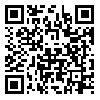BibTeX | RIS | EndNote | Medlars | ProCite | Reference Manager | RefWorks
Send citation to:
URL: http://tumj.tums.ac.ir/article-1-6606-en.html

 , Habibollah Ghassemzadeh1
, Habibollah Ghassemzadeh1 
 , Alipasha Meysami2
, Alipasha Meysami2 
 , Reihaneh Firoozikhojastefar3
, Reihaneh Firoozikhojastefar3 
 , Narges Karamghadiri *
, Narges Karamghadiri * 
 4, Maryam Sorayani1
4, Maryam Sorayani1 
 , Abbas Ali Nasehi5
, Abbas Ali Nasehi5 
 , Jalil Fallah6
, Jalil Fallah6 
 , Narges Ebrahimkhani7
, Narges Ebrahimkhani7 

2- Department of Community and Preventive Medicine, Tehran University of Medical Sciences, Tehran, Iran.
3- Department of Psychosexual, Roozbeh Psychiatric Hospital, Tehran University of Medical Sciences, Tehran, Iran.
4- Department of Clinical Psychology, Roozbeh Psychiatric Hospital, Tehran University of Medical Sciences, Tehran, Iran. ,
5- Helal Institute of Applied Science and Technology, Tehran, Iran.
6- Department of Health, National organization for Civil Registration, Tehran, Iran.
7- Department of Clinical Psychology, Bahonar Hospital, Alborz University of Medical sciences, Alborz, Iran.
Background: Although sexual dysfunction is a common problem in patients with obsessive-compulsive disorder (OCD), there are sparse clinical research on the study of the correlation between OCD subtypes and different phases of sexual response cycle. This study was undertaken to assess sexual function and its different phases in a group of Iranian patients with OCD. Methods: This was a descriptive cross-sectional study. The subjects consisted of 56 married OCD patients (36 female, 20 male) who suffered from OCD according to a psychiatric interview and DSM-IV questionnaire based on structured clinical interview for DSM (SCID). Patients were between 18 to 50 year age that had been referred to the outpatient clinic of Roozbeh Psychiatric Hospital and three private psychiatric clinics in Tehran (from September 2011 to February 2013). Five Questionnaires were used in this study: Iranian validated form of Female Sexual Function Index (FSFI), International Index of Erectile Function (IIEF), Maudsley Obsessional Compulsive Inventory (MOCI), Obsessive Compulsive Inventory-Revised (OCI-R) and a questionnaire which has provided demographic data and other relevant information regarding sexual function and OCD. Results: The prevalence of sexual dysfunction among female was 80.6% and the frequency of disorders in different subscales of FSFI including sexual desire, sexual arousal, lubrication, orgasm, satisfaction and sexual pain were 50%, 58.3%, 36.1%, 44.4%, 41.7% and 52.8% respectively. Sexual disorder is reported in 25% of male OCD patients which subscales' evaluation of IIEF shows low sexual desire in 10%, erectile disorder in 20%, orgasmic disorder in 25%, sexual dissatisfaction in 40% and 50% decreased in the total sore of IIEF. Moreover, the correlation coefficients between the total score of OCI-R with erectile and satisfaction subscales of IIEF were statistically significant. The score of washing subscale in OCI-R and sexual satisfaction was significantly correlated. Conclusion: High prevalence of sexual dysfunction in OCD women and significant correlation between male sexual dysfunction and OCD (r= -481.0 between total score of OCI-R with erectile dysfunction and r= -458.0 between total score of OCI-R and sexual satisfaction) could confirm a relation between OCD and sexual disorders. So, evaluation of sexual function in all patients with OCD is recommended.
| Rights and permissions | |
 |
This work is licensed under a Creative Commons Attribution-NonCommercial 4.0 International License. |



